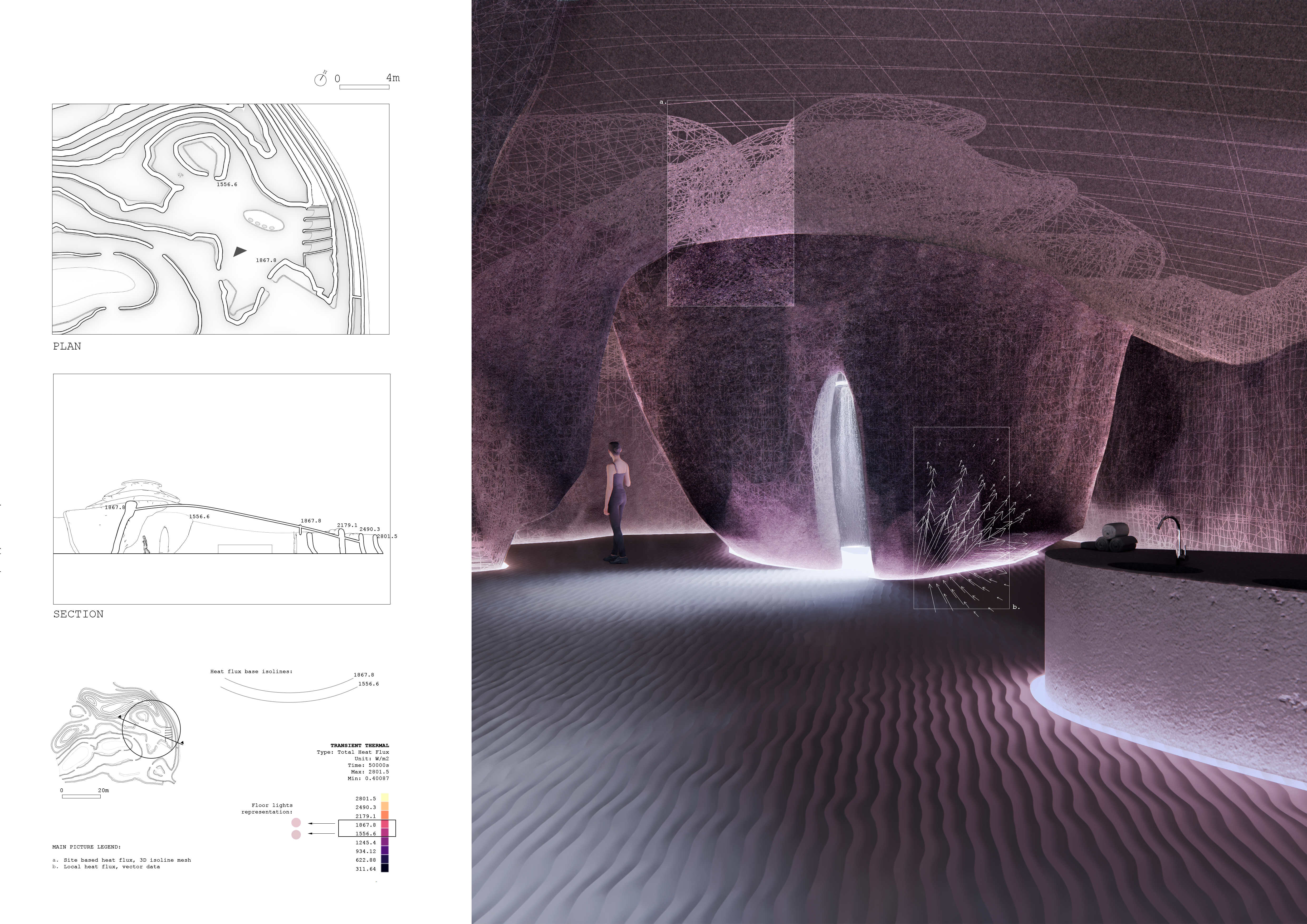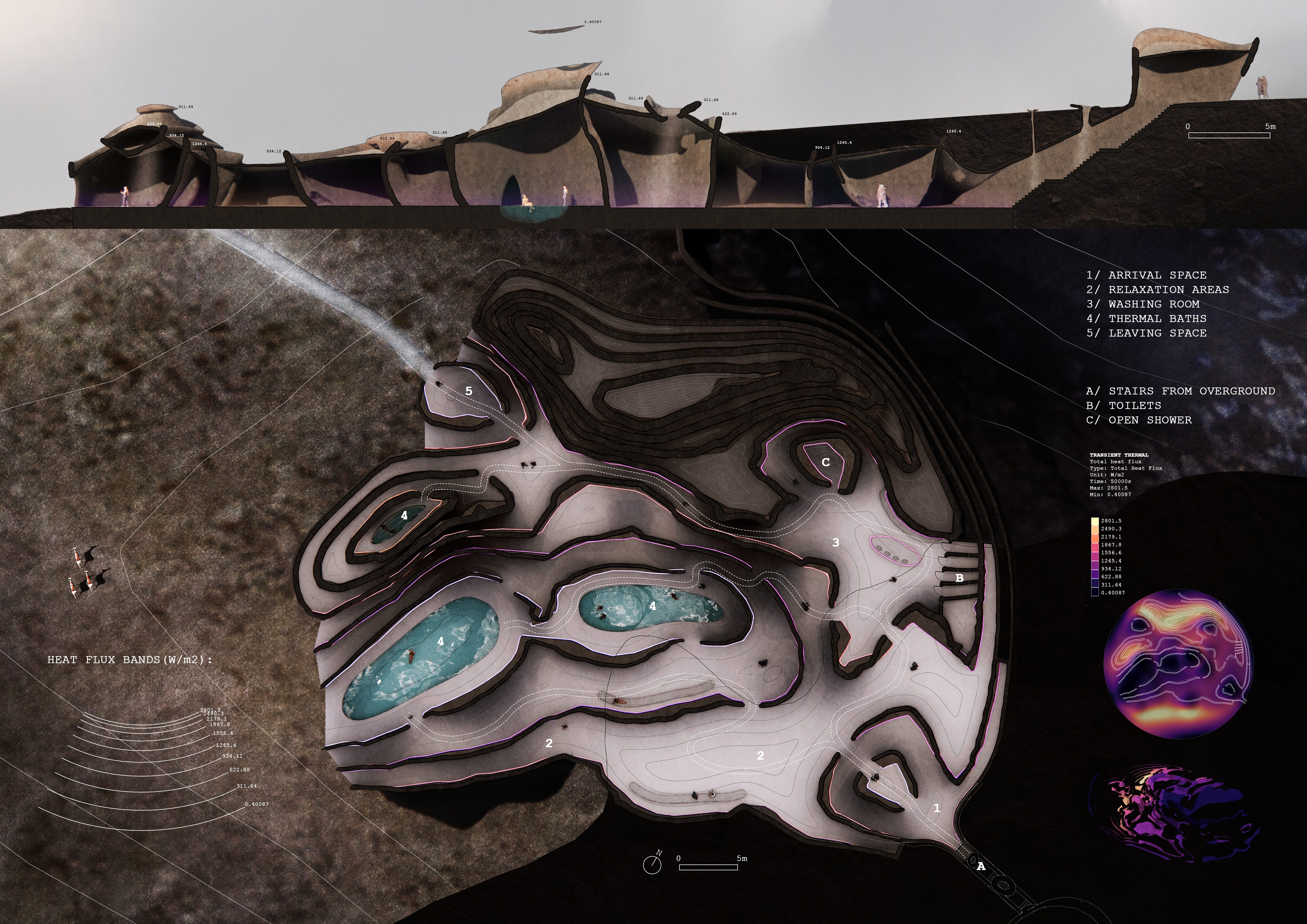Sandra Dus
Year 1 MArch
∆S//ISO:LINE
Isoline Complex, Energy Modulating Artefact and Flux Nodes
Ben More Mountain, Isle of Mull, Scotland
Carved from the volcanic flanks of Ben More, the Isoline Complex is at once artefact and architecture: a basalt-cast thermal battery that absorbs, stores, and gradually releases heat to stabilize an increasingly volatile alpine microclimate. Its heavy, layered form is not just a shelter but a climatic mediator supporting ecological resilience by dampening thermal fluctuations threatening local species.
The architecture arises from an analysis of site-specific heat flux patterns, where computational simulations mapped how energy flows through the mountain terrain. These flux maps were then translated into three-dimensional isolines contours of thermal intensity forming the generative backbone of the design. Each isoline captures a moment in the entropic life of the landscape, giving rise to a series of emergent, inhabitable forms.
These forms manifest as four sculptural interventions along the mountain trail. Like striated fossils, each node is constructed from layers of site-quarried basalt, embedding the mountain’s geological timeline and its thermal logic into their mass. Visitors traverse a sequence of spatial atmospheres: cavernous thermal chambers, reflective water basins, porous terraces, and illuminated voids that buffer, amplify, or release heat depending on the time of day and season.
The Isoline Complex is both instrument and experience a living thermostat and a tactile chronicle of energy exchange. For hikers, it offers more than rest stops: it becomes a choreographed journey through four staged states of entropy, allowing the body to sense what the terrain endures, and to dwell inside the physics of change.




︎︎︎ Home
︎︎︎ Previous // Next ︎︎︎